POETRY
1. “a tumbling” (Bacon, 2025)
I am a tumbling of flesh and thought
a flowing yearning of blood and snot
a changeling, a god, a war ever fought
a twitching, a falling, until this soul rot
what is this flux that nature hath wrought
2. “Men at Forty” (Donald Justice, 1966)
Men at forty
Learn to close softly
The doors to rooms they will not be
Coming back to.At rest on a stair landing,
They feel it moving
Beneath them now like the deck of a ship,
Though the swell is gentle.And deep in mirrors
They rediscover
The face of the boy as he practices tying
His father’s tie there in secret,And the face of that father,
Still warm with the mystery of lather.
They are more fathers than sons themselves now.
Something is filling them, somethingThat is like the twilight sound
Of the crickets, immense,
Filling the woods at the foot of the slope
Behind their mortgaged houses.
3. “The Two-headed Calf” (Laura Gilpin, 1977)
Tomorrow when the farm boys find this
freak of nature, they will wrap his body
in newspaper and carry him to the museum.But tonight he is alive and in the north
field with his mother. It is a perfect
summer evening: the moon rising over
the orchard, the wind in the grass.
And as he stares into the sky, there
are twice as many stars as usual.
4. Chinatown, NYC
5. BankingSlut
BORGES (TIMECATS)
Time is the substance I am made of.
Time is a river which sweeps me along, but I am the river;
it is a tiger that destroys me, but I am the tiger;
it is a fire that consumes me, but I am the fire.
At the railroad station he noted that he still had thirty minutes. He quickly recalled that in a cafe on the Calle Brazil (a few dozen feet from Yrigoyen’s house) there was an enormous cat which allowed itself to be caressed as if it were a disdainful deity. He entered the cafe. There was the cat, asleep. He ordered a cup of coffee, slowly stirred the sugar, sipped it (this pleasure had been denied him in the clinic), and thought, as he smoothed the cat’s black coat, that this contact was an illusion and that the two beings, man and cat, were as good as separated by a glass, for man lives in time, in succession, while the magical animal lives in the present, in the eternity of the instant.
HISTORY
6. The strange and sad history of the Cagots
The Cagots were a persecuted minority who lived in the west of France and northern Spain: the Navarrese Pyrenees, Basque provinces, Béarn, Aragón, Gascony and Brittany. Evidence of the group exists as far back as AD 1000.
The origins of the Cagots remain uncertain, with various hypotheses proposed throughout history. Some theories suggest they were descendants of biblical or legendary figures cursed of God, or the descendants of medieval lepers, while others propose they were related to the Cathars or even a fallen guild of carpenters. Some suggest descent from a variety of other marginalized racial or religious groups. Despite the varied and often mythical explanations for their origins, the only consistent aspect of the Cagots was their societal exclusion and the lack of any distinct physical or cultural traits differentiating them from the general population.
The Cagots no longer form a separate social class and were largely assimilated into the general population. Very little of Cagot culture still exists, as most descendants of Cagots have preferred not to be known as such.
While Cagots followed the same religion as the non-Cagots who lived around them, they were subject to variety of discriminatory practices in religious rites and buildings, this included being forced to use a side entrance to churches, often an intentionally low one to force Cagots to bow and remind them of their subservient status. They were either altogether forbidden to partake of the sacrament, or the Eucharist was given to them on the end of a wooden spoon. They had their own holy water fonts set aside for Cagots, and touching the normal font was strictly forbidden. These restrictions were taken seriously; with one story collected by Elizabeth Gaskell explaining the origin of the skeleton of a hand nailed to the church door in Quimperlé, Brittany, where in the 18th century, a wealthy Cagot had his hand cut off and nailed to the church door for daring to touch the font reserved for “clean” citizens.
The marginalization of the Cagots began at baptism where chimes were not rung in celebration as was the case for non-Cagots and that the baptisms were held at nightfall. They were at times compelled to wear a distinctive dress to which, in some places, was attached the foot of a goose or duck (whence they were sometimes called Canards), and latterly to have a red representation of a goose’s foot in fabric sewn onto their clothes. They were typically not allowed to enter taverns or use public fountains.
Few consistent reasons were given as to why Cagots were hated; accusations varied from them being cretins, lepers, heretics, cannibals, sorcerers, werewolves, sexual deviants, to actions they were accused of such as poisoning wells, or for simply being intrinsically evil. They were viewed as untouchables, with Christian Delacampagne noting how it was believed that they could cause children to fall ill by touching them or even just looking at them, being considered so pestilential that it was a crime for them to walk common roads barefooted or to drink from the same cup as non-Cagots. It was also a common belief that the Cagots gave off a foul smell. Joaquim de Santa Rosa de Viterbo recorded that many believed Cagots were born with a tail. Many Bretons believed that Cagots bled from their navel on Good Friday.
The French early psychiatrist Jean-Étienne Dominique Esquirol wrote in his 1838 works that the Cagots were a subset of “idiot”, and separate from “cretins”. By the middle of the 19th century, previous pseudo-medical beliefs and beliefs of them being intellectually inferior had waned and German doctors, by 1849, regarded them as “not without the ability to become useful members of society.”
7. Find someone who glazes you like Pliny the Younger glazed the stoic philosopher Euphrates (c. 35-118 AD).
Euphrates is possessed of so many shining talents, that he cannot fail to strike and engage even the somewhat illiterate. He reasons with much force, penetration, and elegance, and frequently embodies all the sublime and luxuriant eloquence of Plato. His style is rich and various, and at the same time so wonderfully sweet, that it seduces the attention of the most unwilling hearer. His outward appearance is agreeable to all the rest: he has a tall figure, a comely aspect, long hair, and a large white beard: circumstances which though they may probably be thought trifling and accidental, contribute however to gain him much reverence. There is no uncouthness in his manner, which is grave, but not austere; and his approach commands respect without creating awe. Distinguished as he is by the sanctity of his life, he is no less so by his polite and affable address. He points his eloquence against the vices, not the persons of mankind, and without chastising reclaims the wanderer. His exhortations so captivate your attention, that you hang as it were upon his lips; and even after the heart is convinced, the ear still wishes to listen to the harmonious reasoner.
MADNESS
8. RELEASE THE THIRD SECRET POPE LEO XI, YOU COWARD
Aer Lingus Flight 164 was a scheduled Boeing 737 passenger flight that was hijacked on 2 May 1981, en route from Dublin in Ireland to London Heathrow in England.
While on approach to Heathrow, about five minutes before the flight was due to land in England, a 55-year-old Australian man named Laurence James Downey went into the aircraft lavatory and doused himself in petrol, a highly flammable liquid. He then went to the cockpit and demanded that the plane continue on to Le Touquet – Côte d’Opale Airport in France and refuel there for a flight to Tehran, Iran. Upon landing at Le Touquet, Downey further demanded the publication in the Irish press of a nine-page statement which he had the captain throw from the cockpit window
After an eight-hour standoff (during which time Downey released 11 of his 108 hostages), French special forces stormed the plane and apprehended Downey. No shots were fired during the ordeal and nobody was injured. It was later found out that Downey was being sought by police in Perth, Australia, in connection with a $70,000 land fraud incident, and was also wanted in Shannon, Ireland, for alleged assault. He was sentenced in February 1983, in Saint-Omer, France, to five years' imprisonment for air piracy
In his statement, Downey claimed to have been a Trappist monk in residence at Tre Fontane Abbey in the 1950s (this was later confirmed by monastery officials), before he was expelled from the order for punching a superior in the face. He then took a job as a tour guide in central Portugal, at a shrine devoted to Our Lady of Fátima, the reported origin of the Three Secrets of Fátima. At the time of the hijacking, the third secret was known only to the Pope and other senior figures in the Catholic Church; Downey's statement called on the Vatican to release this secret to the public.
The Third secret of Fátima was released in 2000…or at least that’s what they want you to think…
Critics such as Italian journalist and media personality Antonio Socci claim that the four-page handwritten text of the Third Secret released by the Vatican in 2000 is not the real secret, or at least not the full secret
9. The Resurrection (La Resurrezione)
…is a bronze and brass sculpture by Pericle Fazzini in the Paul VI Audience Hall in Rome. Intended to capture the anguish of 20th century mankind living under the threat of nuclear war, La Resurrezione depicts Jesus rising from a nuclear crater in the Garden of Gethsemane. Fazzini summarized the action of the statue as "Christ rises from this crater torn open by a nuclear bomb; an atrocious explosion, a vortex of violence and energy.” The sculpture’s dimensions are 66 ft × 23 ft × 10 ft (20.1 m × 7.0 m × 3.0 m). It weighs 30 tons and cost $400,000.
10. The Penza Recluses
The Penza Recluses were an Independent Russian doomsday cult founded by Pyotr Kuznetsov which borrowed some ideas from Eastern Orthodoxy. The self-given name of the group was “Heavenly Jerusalem”. The group broke away from the Russian Orthodox Church, considering it “insufficiently” orthodox. Its members were not allowed to eat processed food, watch television nor handle money. They rejected bar codes, social security and other national identification numbers, and passports as they are said to feature satanic imagery and other symbols, such as the “Eye of Providence” and “the number of the Beast”.
In November 2007, between 29 and 35 members of the group holed themselves up in a cave in Russia's Penza region, near the village of Nikolskoye, threatening mass suicide by explosion if authorities or community members tried to intervene. Kuznetsov had told them to hide themselves away, to pray and await the end of the world, which he predicted would take place in May 2008. Kuznetsov, himself, was not with the group, as he had been placed under police arrest. Nonetheless, policemen, religious leaders, and various media outlets all camped outside of the cave for nearly six months, in the depths of winter, anxiously waiting to see if any members of the group would eventually give up and leave.
On March 28, 2008, seven women who had been in the cave were treated by emergency workers, regional officials said. Three days later, another 14 members emerged from the cave, after melting snow caused part of the cave’s interior to collapse.
On April 3, 2008, Kuznetsov was taken to a hospital where “Officials said that he may have attempted suicide after realising his prediction had been wrong.” In subsequent years, he was in a psychiatric ward, with a diagnosis of paranoia. In 2016, the court again extended the duration of his treatment, per the request of the chief of the regional psychiatric clinic.
On May 16, 2008, the last nine members of the cult emerged from the cave due to toxic fumes produced by decaying corpses; two fellow cult members had died during their stay in the cave. On May 21, after removing the bodies of the deceased, the cave was blown-up. Officially, this was done out of safety concerns, and its potential hazards to the local population and curious visitors. Several cult members would relocate to a deaf village in Belarus.
After their stay in the cave, most of the sect members left Nikolskoye, except for the family of Vasily Nedogon, with his wife and three children. As of 2012, the Nedogons continued to live without electricity and passports; they still wait and pray to God that the end time’s arrival will be imminent.
ANNOUNCEMENTS
11. In October of last year, I founded a NYC-based secret society.
The Orbis Tertius Society: a shadowy cabal, a benevolent conspiracy, a metaphysical expedition, an experiment in thought, a trivial game.
To whom it may concern: The OT Society is now defunct. It does not exist. Do not reach out to me and ask to join. The OT society does not exist.
12. Some recent essays from Seeds of Science’s Best of Science Blogging feed (curated by yours truly)
Why Psychology Hasn’t Had a Big New Idea in Decades by Ethan Ludwin-Peery
How to Make SuperBabies by Gene Smith
Learning to Be: how learning strengthens the emergent nature of collective intelligence in a minimal agent by Michael Levin
134 Orgasms in an Hour? Questioning the Methodology of the Orgasm World Records by Mark Miller
Epistemic Hell by Roger’s Bacon
Music in Human Evolution by Kevin Simler
A Natural History of Beauty by Kevin Simler
Cold humans and warm machines (on the seductions of AI conversations) by Sander Van de Cruys
IQ discourse is increasingly unhinged by Erik Hoel
ART
13. Find someone who glazes you like Colin Wilson glazed Van Gogh
In approaching the work of such a man as Van Gogh, an attitude of completely uncritical acceptance (such as most of us feel towards the dogmas of higher mathematics) may be more rewarding than the intellectual-critical approach. What we are most aware of in Van Gogh is that the ‘thought-riddled nature’ has been very decisively kicked-out, and the result achieved is Lawrence's ‘immediacy of sense perception’. The Pro and Contra have disappeared; with the senses awakened, it becomes nonsense to talk about human misery. Certainly there is misery, but it doesn’t matter. Nothing matters that any human being ever thought; only this.
MUSIC
MORE ART
I dreamed that a word rose up from under the ground. It came from below and passed before me: I looked at it and my hair stood on end.



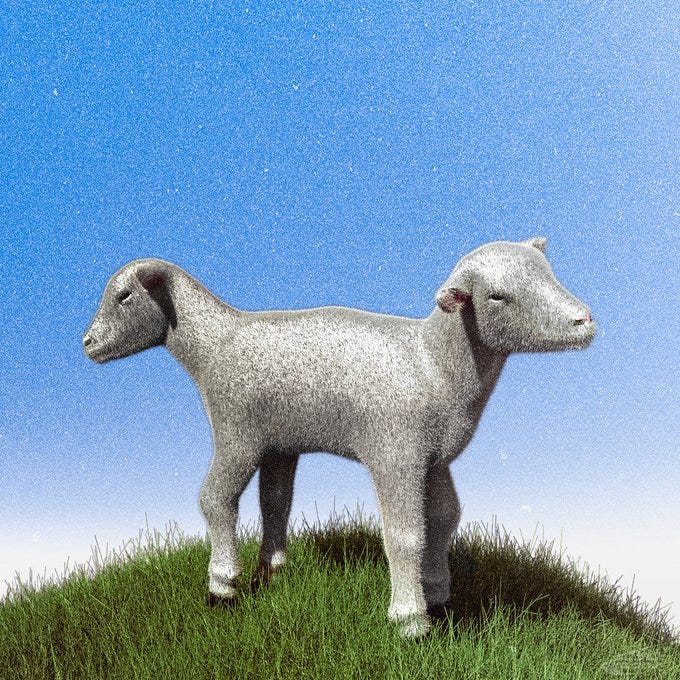


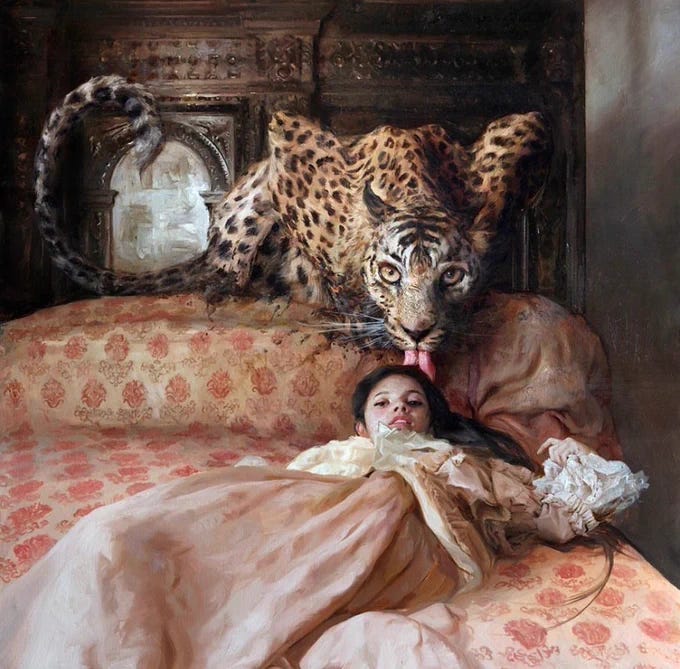
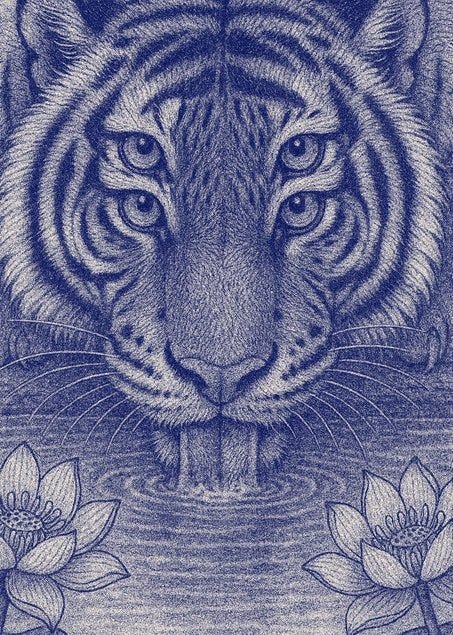


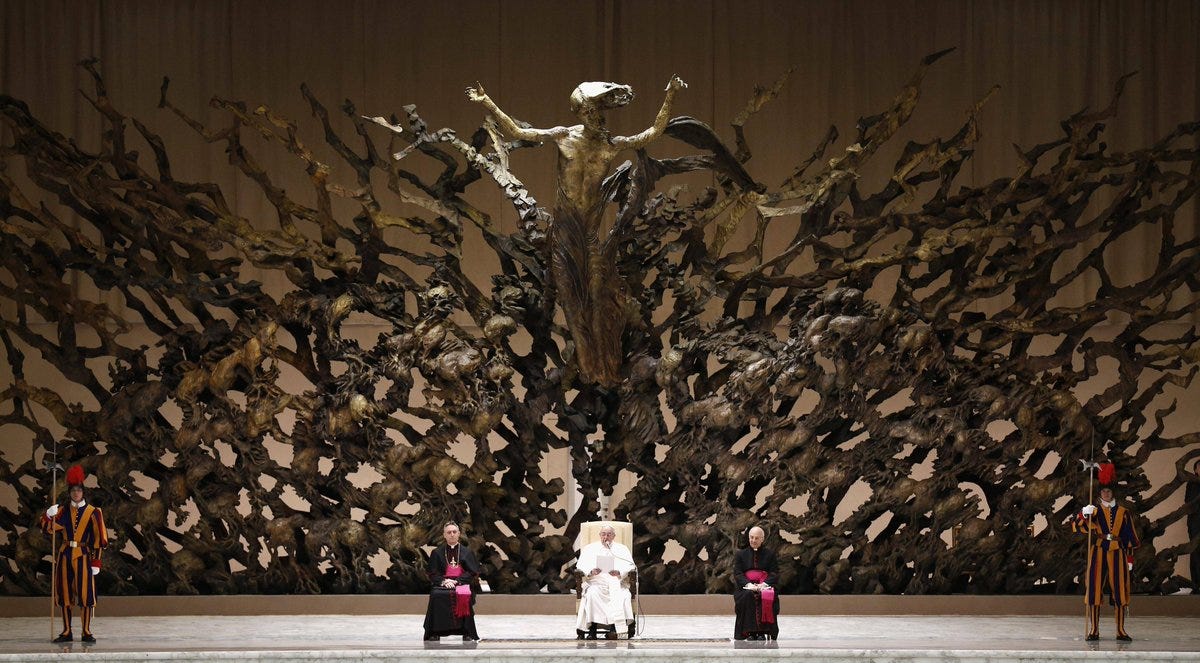

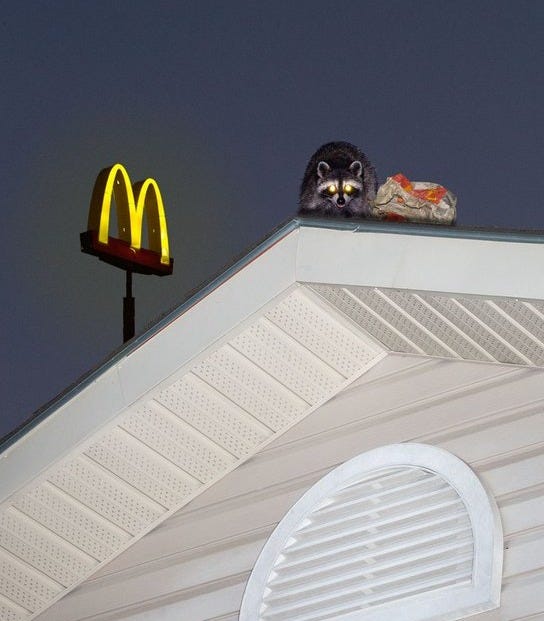
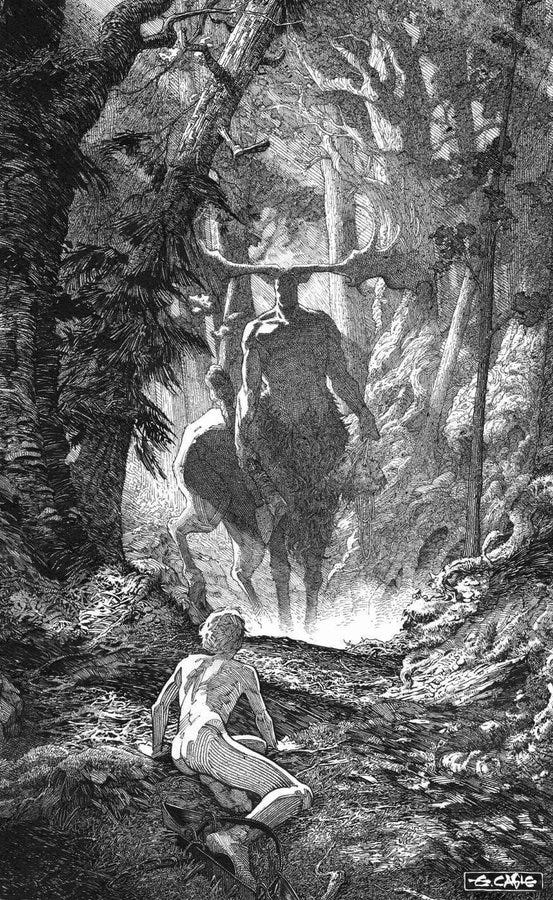
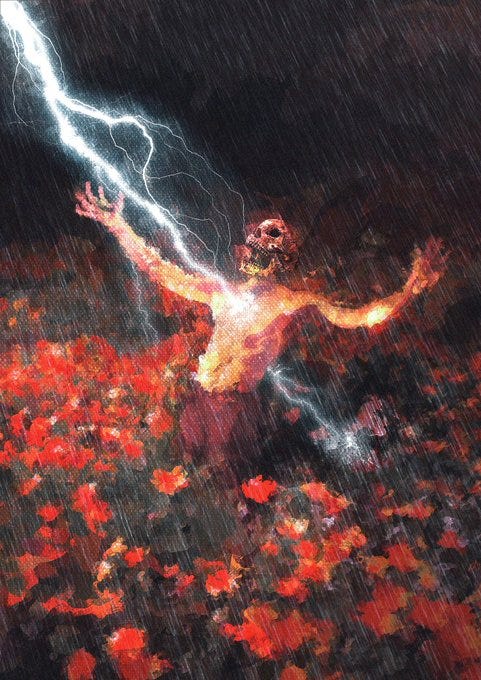


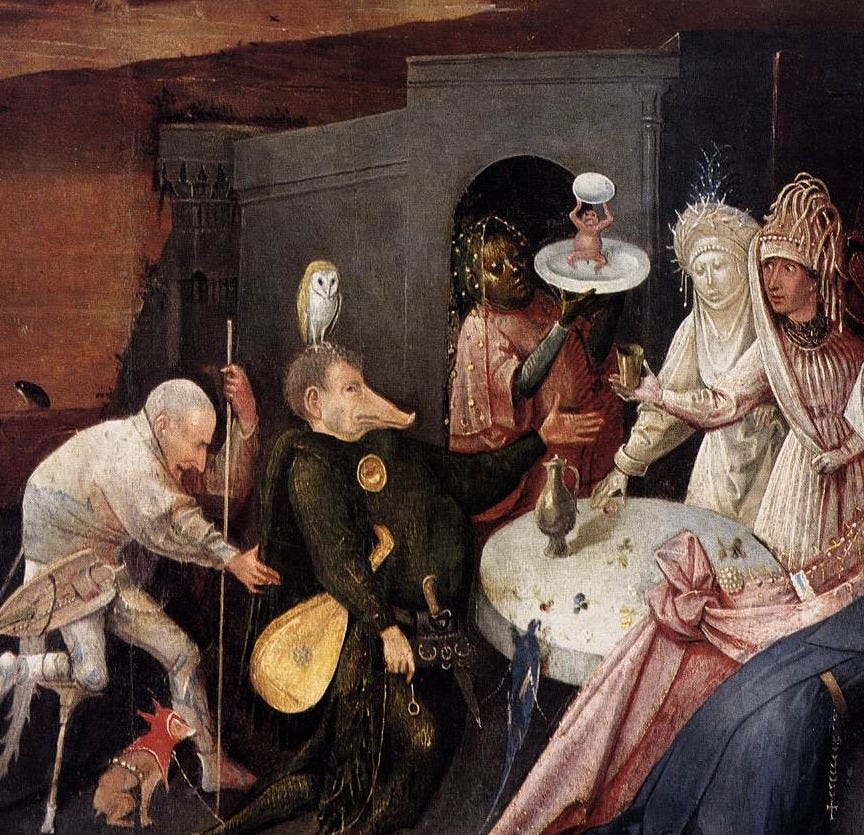
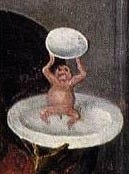

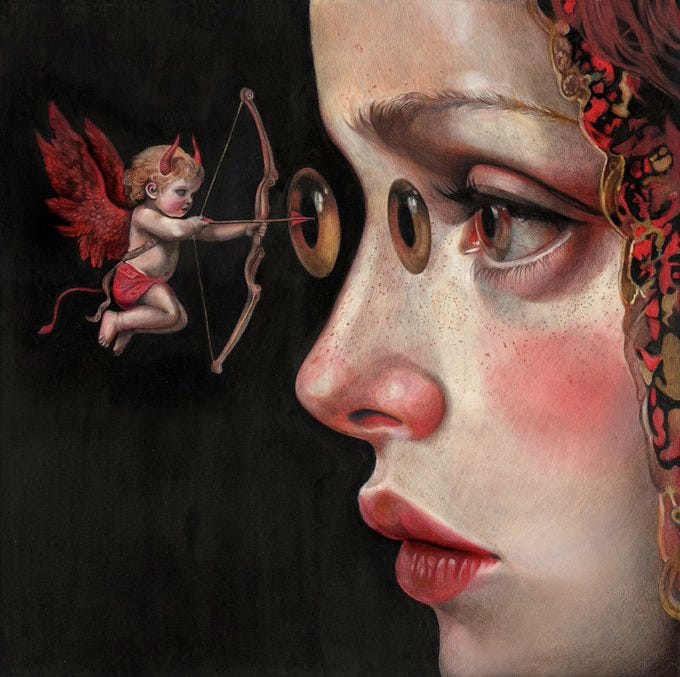


Ah, you have discovered Thundercat's "Dragonball Durag," one of the best music videos in existence. Fact: the three girls at the end are the Haim sisters, who also appear in Paul Thomas Anderson's "Licorice Pizza."
Great collection of poetry and the strange. Thank you.